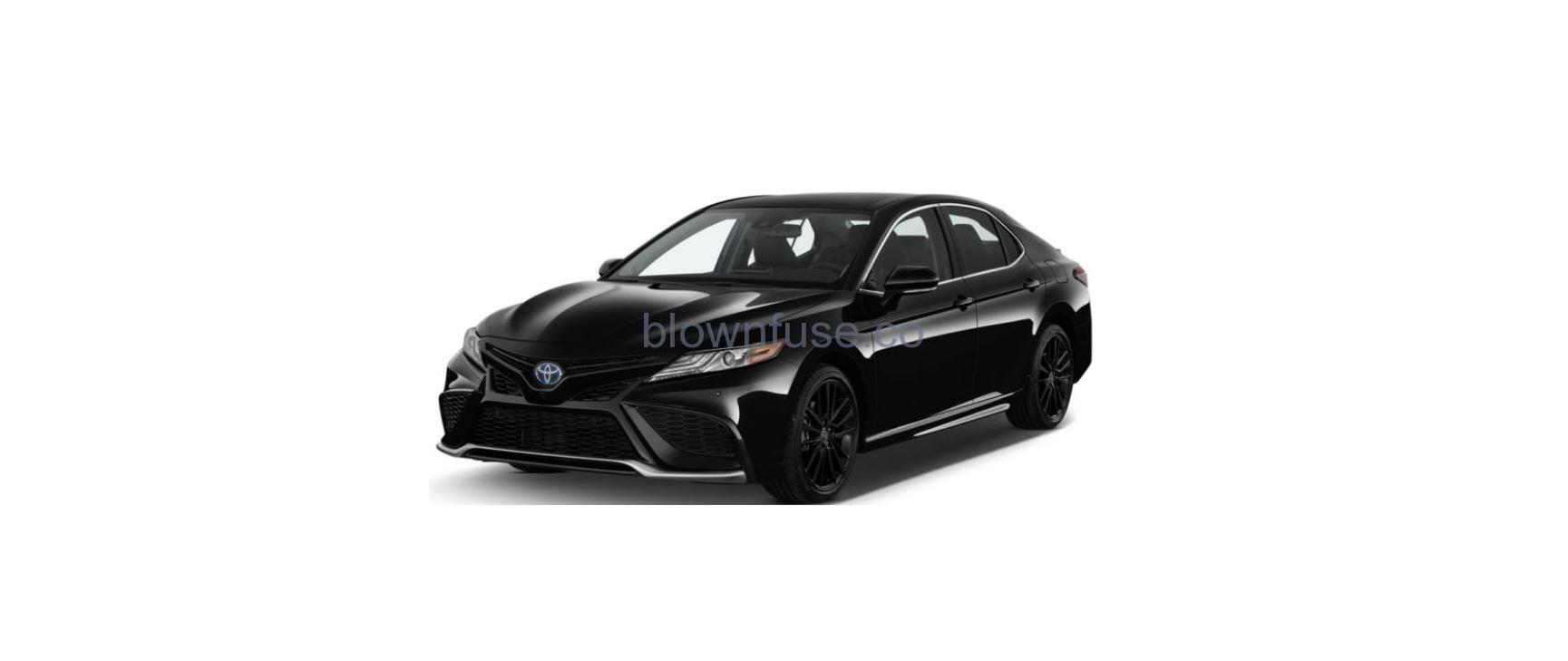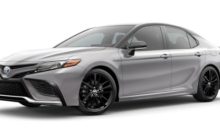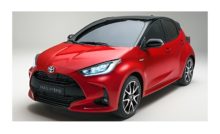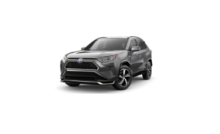2022 Toyota Camry Maintenance User Manual




2022 Toyota Camry Maintenance


Maintenance requirements
To ensure safe and economical driving, day-to-day care and regular maintenance are essential. It is the owner’s responsibility to perform regular checks. Toyota recommends the following maintenance:
General maintenance
General maintenance should be performed on a daily basis. This can be done by yourself or by a Toyota dealer.
Scheduled maintenance
Scheduled maintenance should be performed at specified intervals according to the maintenance schedule. For details about maintenance items and schedules, refer to the “Scheduled Maintenance Guide” or “Owner’s Manual Supplement”.
Do-it-yourself maintenance
You can perform some maintenance procedures by yourself. Please be aware that do-it-yourself maintenance may affect warranty coverage. The use of Toyota Repair Manuals is recommended.
For details about warranty coverage, refer to the separate “Owner’s War-ranty Information Booklet” or “Owner’s Manual Supplement”.
Repair and replacement
It is recommended that genuine Toyota parts be used for repairs to ensure the performance of each system. If non-Toyota parts are used in replacement or if a repair shop other than a Toyota dealer performs repairs, confirm the warranty coverage.
Resetting the message indicating maintenance is required (on some models)
After the required maintenance is performed according to the maintenance schedule, please reset the message. To reset the message, perform the following procedure:
- Select
- 4.2-inch display: Select “Vehicle Settings” and then press
- Select “Scheduled Maintenance” and then press
- Select “Yes” and then press
- A message will be displayed on the multi-information display when the reset procedure has been completed.
Allow inspection and repairs to be performed by a Toyota dealer
- Toyota technicians are well-trained specialists and are kept up to date with the latest service information. They are well informed about the operations of all systems on your vehicle.
- Keep a copy of the repair order. It proves that the maintenance that has been performed is under warranty coverage. If any problem should arise while your vehicle is under warranty, your Toyota dealer will promptly take care of it.
WARNING
- If your vehicle is not properly maintained Improper maintenance could result in serious damage to the vehicle and possible death or serious injury.
- Important health and safety information
- Engine exhaust, some of its constituents, and a wide variety of automobile components contain or emit chemicals known to the State of California to cause cancer and birth defects, and other reproductive harm. Work in a well-ventilated area.
- Oils, fuels, and fluids contained in vehicles as well as waste produced by component wear contain or emit chemicals known to the State of California to cause cancer and birth defects or other reproductive harm. Avoid exposure and wash any affected area immediately.
- Battery posts, terminals, and related accessories contain lead and lead compounds that are known to cause brain damage. Wash your hands after handling. (P. 469)
General maintenance
Listed below are the general maintenance items that should be performed at the intervals specified in the “Owner’s Warranty Information Booklet” or “Owner’s Manual Supplement/Scheduled Maintenance Guide”. It is recommended that any problem you notice should be brought to the attention of your Toyota dealer or qualified service shop for advice.
Engine compartment
| Items | Checkpoints |
| Battery | Check the connections. (®P. 469) |
| Brake fluid | Is the brake fluid at the correct level? (®P. 468) |
| Engine coolant | Is the engine coolant at the correct level? (®P. 466) |
| Engine oil | Is the engine oil at the correct level? (®P. 462) |
| Exhaust system | There should not be any fumes or strange sounds. |
| Radiator/condenser | The radiator and condenser should be free from foreign objects. (®P. 467) |
| Washer fluid | Is there sufficient washer fluid? (®P. 472) |
Vehicle interior
| Items | Checkpoints |
| Accelerator pedal | • The accelerator pedal should move smoothly (without uneven pedal effort or catching). |
| Automatic transmission “Park” mechanism | • When parked on a slope and the shift lever is in P, is the vehicle securely stopped? |
| Brake pedal | • Does the brake pedal move smoothly? • Does the brake pedal have appropriate clearance from the floor? (®P. 583) • Does the brake pedal have the correct amount of free play? (®P. 583) |
| Brakes | • The vehicle should not pull to one side when the brakes are applied. • The brakes should work effectively. • The brake pedal should not feel spongy. • The brake pedal should not get too close to the floor when the brakes are applied. |
| Head restraints (adjustable type) | • Do the head restraints move smoothly and lock securely? |
| Indicators/buzzers | • Do the indicators and buzzers function properly? |
| Lights | • Do all the lights come on? |
| Parking brake | • Does the parking brake operate normally? • When parked on a slope and the parking brake is on, is the vehicle securely stopped? |
| Items | Checkpoints |
| Seat belts | • Do the seat belts operate smoothly? • The seat belts should not be damaged. |
| Seats | • Do the seat controls operate properly? |
| Steering wheel | • Does the steering wheel rotate smoothly? • Does the steering wheel have the correct amount of free play? • There should not be any strange sounds coming from the steering wheel. |
Vehicle exterior
| Items | Checkpoints |
| Doors/trunk | • Do the doors/trunk operate smoothly? |
| Engine hood | • Does the engine hood lock system work properly? |
| Fluid leaks | • There should not be any signs of fluid leakage after the vehicle has been parked. |
| Tires | • Is the tire inflation pressure correct? • The tires should not be damaged or excessively worn. • Have the tires been rotated according to the maintenance schedule? • The wheel nuts should not be loose. |
| Windshield wipers | • The wiper blades should not show any signs of cracking, splitting, wear, contamination or deformation. • The wiper blades should clear the windshield without streaking or skipping. |
WARNING
If the engine is running Turn the engine off and ensure that there is adequate ventilation before performing maintenance checks.
Emission inspection and maintenance (I/M) programs
Some states have vehicle emission inspection programs that include OBD (On-Board Diagnostics) checks. The OBD system monitors the operation of the emission control system.
If the malfunction indicator lamp comes on
The OBD system determines that a problem exists somewhere in the emission control system. Your vehicle may not pass the I/M test and may need to be repaired. Contact your Toyota dealer to service the vehicle.
Your vehicle may not pass the I/M test in the following situations
- When the battery is disconnected or discharged
- Readiness codes that are set during ordinary driving are erased. Also, depending on your driving habits, the readiness codes may not be completely set.
- When the fuel tank cap is loose
- The malfunction indicator lamp comes on indicating a temporary malfunction and your vehicle may not pass the I/M test.
When the malfunction indicator lamp still remains on after several driving trips
The error code in the OBD system will not be cleared unless the vehicle is driven 40 or more times.
If your vehicle does not pass the I/M test
Contact your Toyota dealer to prepare the vehicle for retesting.
Recent Posts
VW Jetta Engine Fuse Box Diagram
Access the comprehensive 2010-2018 VW Jetta Passenger Fuse Box Diagram to troubleshoot electrical issues effectively.…
VW Jetta Passenger Fuse Box Diagram
Explore the comprehensive VW Jetta Passenger Fuse Box Diagram to troubleshoot electrical issues effectively. Understand…
2023 Ford F-150 Lightning Fuse Box Diagram
Under Hood Fuse Box Location Remove the front luggage compartment cover. Under Hood Fuse Box…
2022 Kawasaki NINJA H2 SX SE Brake Lever Adjuster Owner’s Manual
2022 Kawasaki NINJA H2 SX SE Brake Lever Adjuster Owner's Manual NOTICE Only adjust the front…
2023 Land Rover Range Rover Evoque Exiting The Vehicle Owners Manual
2023 Land Rover Range Rover Evoque Exiting The Vehicle SINGLE LOCKING WARNING Before exiting the…
2023 Land Rover Range Rover Evoque Front Seats Owners Manual
2023 Land Rover Range Rover Evoque Front Seats FRONT SEAT SAFETY Make sure to read…


